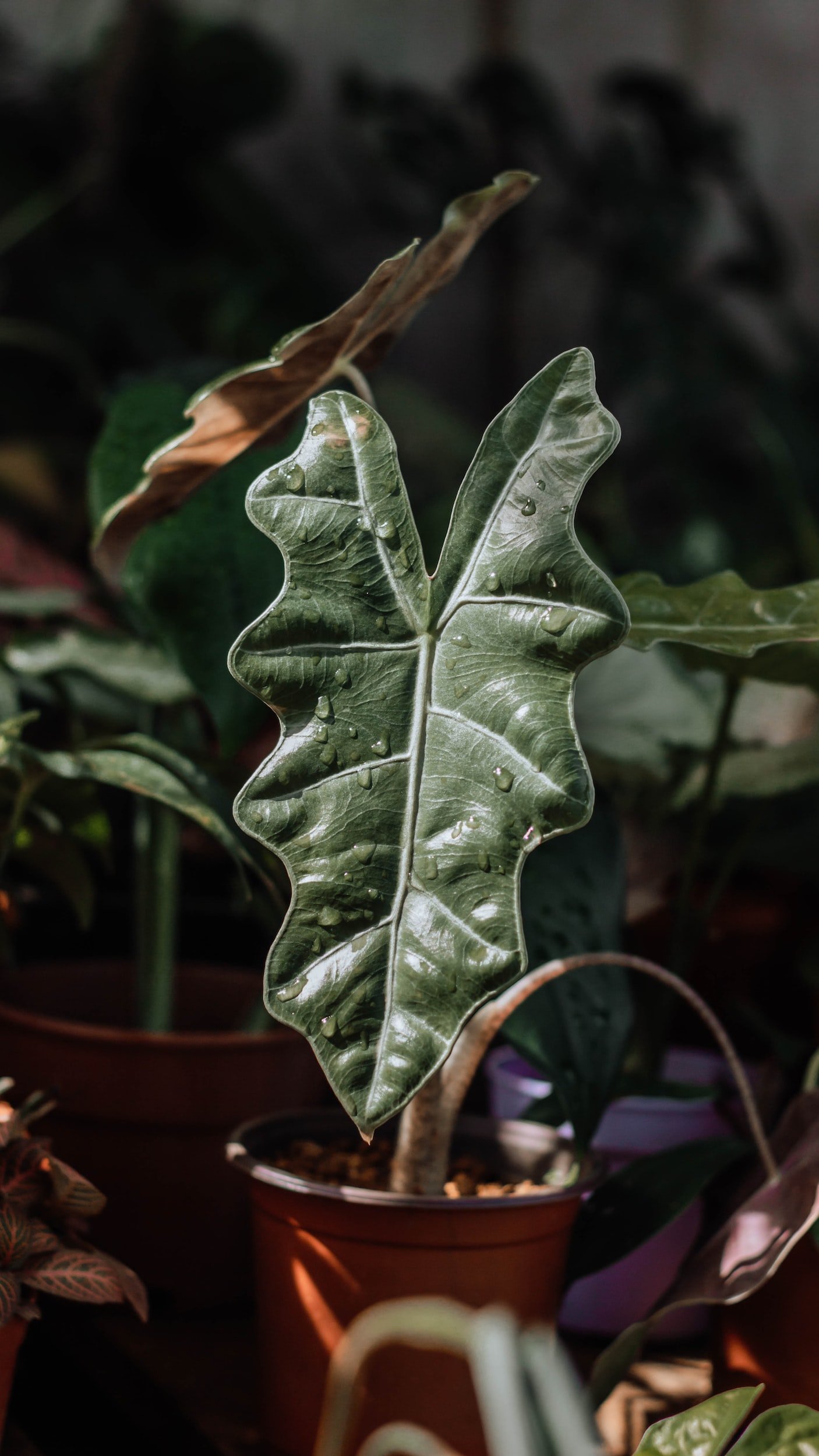Plant Profile
Alocasia Polly
a.k.a. African Mask, Amazonian Elephant’s Ear
The Alocasia Amazonica is a striking houseplant that is instantly recognisable by its deep green, arrow-shaped leaves with bold silvery veins and its long stems. Originating from the tropical rainforests of South-East Asia, the Alocasia Amazonica thrives in humid environments, making it an ideal houseplant for bathrooms and kitchens. It’s ‘Elephant Ear’ leaves can grow up to 16 inches long! Given the proper TLC, at maturity this plant can grow up to 1 - 2 feet tall and wide.
Top Tips
✔ The Alocasia Amazonica goes through a dormant period in the winter months. During dormancy keep the plant in a warm place and reduce watering.
✔ The plant will grow best when in well aerated soil that drains quickly.
✔ Avoid placing the plant near radiators or air conditioning units in order to maintain its humidity.
Plant Care
-
The Alocasia Amazonica thrives in medium to bright indirect or dappled light. Keep the plant out of direct sunlight as this can scorch its leaves.
-
When it comes to watering your Alocasia Amazonica, little and often is best. Aim to keep the soil moist, but not soggy, to prevent overwatering as well as root rot.
-
As the Alocasia Amazonica is native to the rainforest it thrives in high humidity, so if possible mist the plant daily. Positioning the Alocasia Amazonica close to other plants or placing it in a pebble tray partly filled with water will also help to increase humidity.
-
Feed your Alocasia Amazonica once a month during the spring and summer with a general houseplant fertiliser. There is no need to feed the plant during the Winter when the plant’s active growth naturally stops.
-
Aim to keep the room the plant is positioned in between 18 - 25°C, avoiding sudden changes in temperature and cold drafts.
-
The Alocasia Amazonica is toxic to pets and humans if consumed.
-
Propagation by division, which should be done during the spring or summer months.
-
The plant will need to be repotted when its roots are visible on the surface of the soil or are growing out of the drainage holes in its current pot. Choose a new pot that is at least 2 inches bigger and make sure that the plant is potted at the same depth as the original pot.

Quick plant check up
YELLOWING LEAVES
A sign of overwatering. Make sure that the top soil dries out between waterings, especially during the Winter months.
LIMP OR DROOPY LEAVES
A sign of underwatering. Make sure to stick to a consistent watering schedule and water the plant when the top soil is dry.



